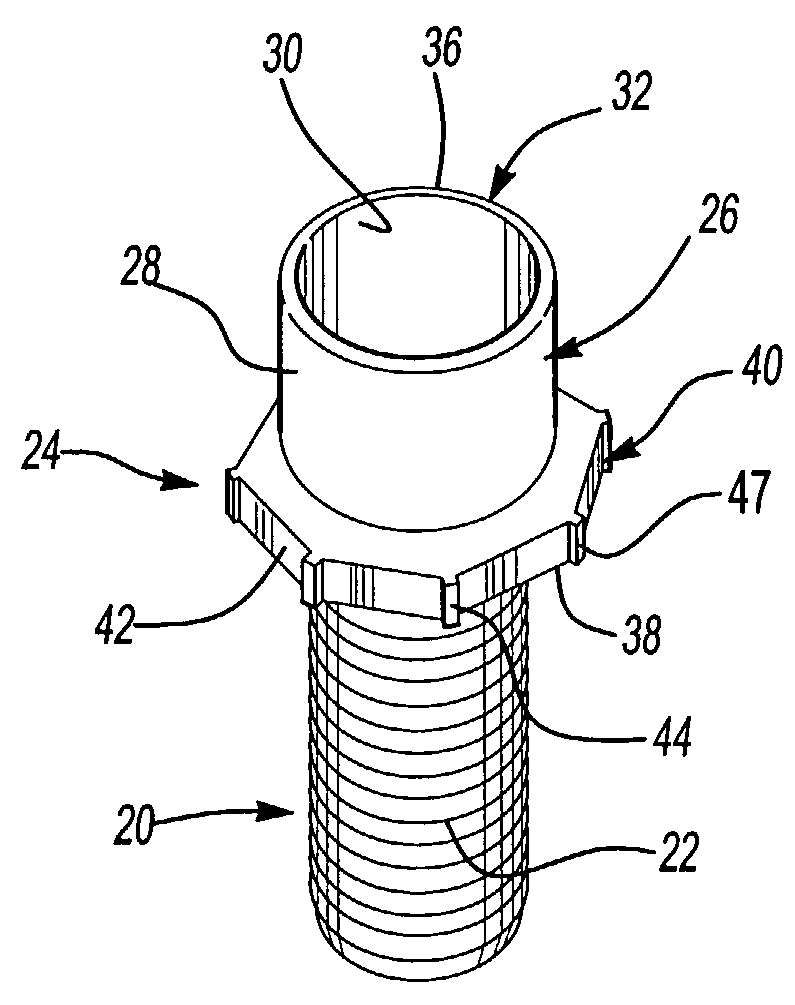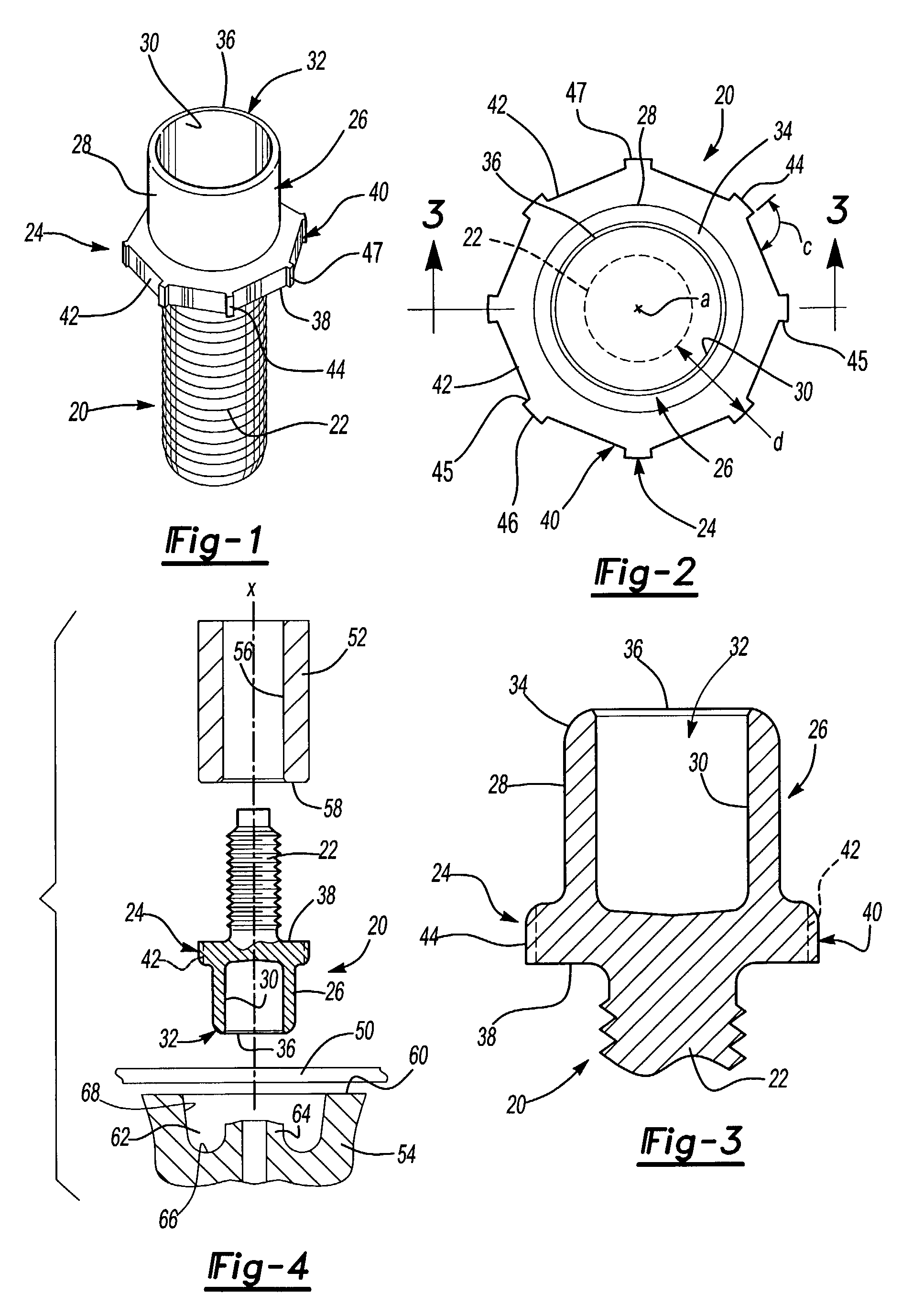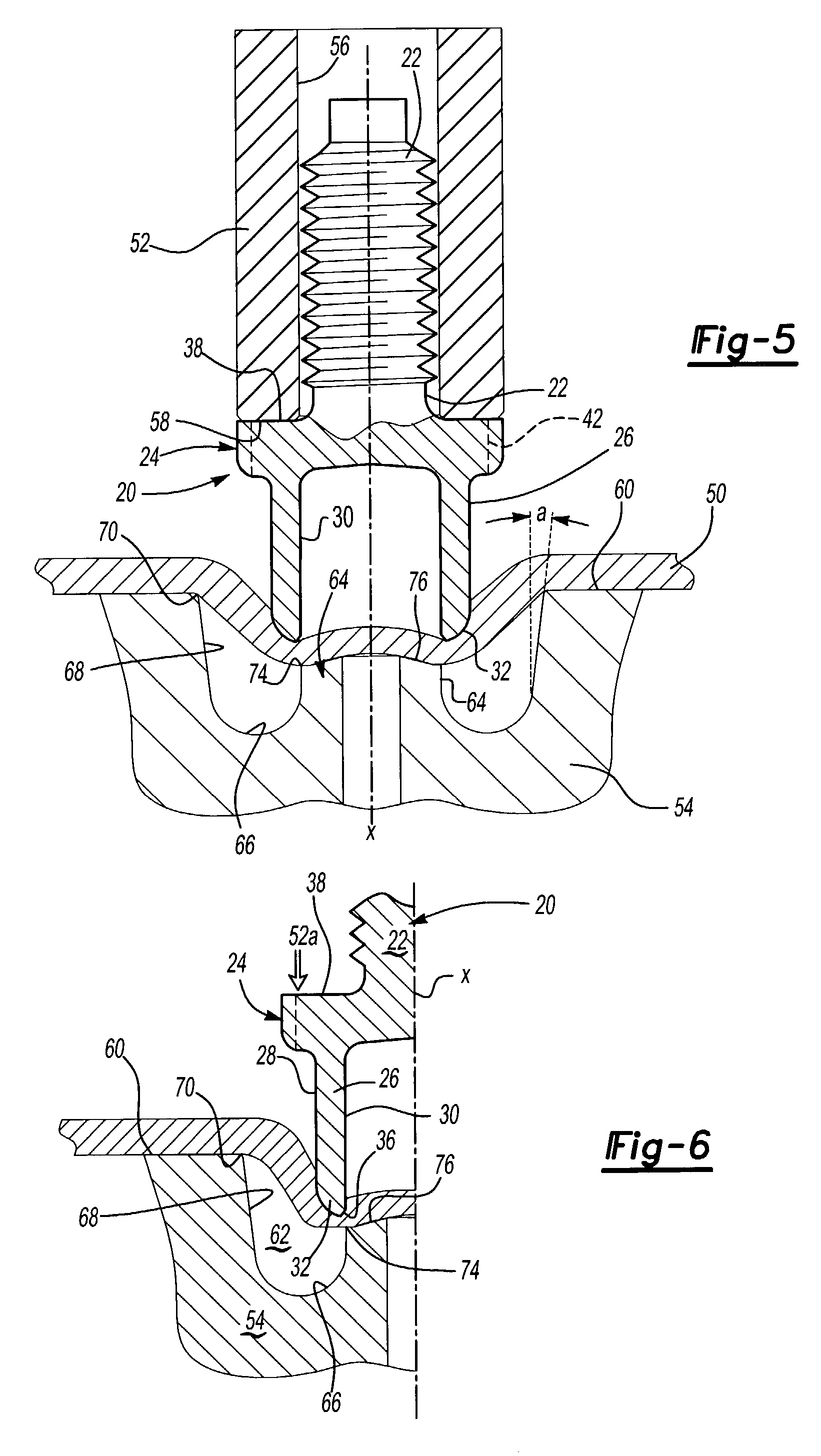Torque resistant fastening element
- Summary
- Abstract
- Description
- Claims
- Application Information
AI Technical Summary
Benefits of technology
Problems solved by technology
Method used
Image
Examples
Embodiment Construction
[0020]As set forth above, this invention relates to an improved fastening element having significantly improved torque resistance, and a method of attaching the fastening element to a panel. As will be understood by those of skill in the art, the drawings illustrate preferred embodiments of this invention but are not limiting except as set forth in the appended claims. Although the figures demonstrate the self-piercing projection, the invention is not limited to a self-piercing projection and can include other fastening elements capable of being mechanically affixed to a panel such as, for example, self-piercing nuts, clinch nuts, clinch projections, and equivalents.
[0021]FIGS. 1 through 3 illustrate one embodiment of the fastening element generally shown at 20 in the form of a male fastener having a threaded shank portion 22. It should be understood by those of skill in the art that the projection or shank portion 22 may be threaded or unthreaded and may take various forms. As stat...
PUM
| Property | Measurement | Unit |
|---|---|---|
| Length | aaaaa | aaaaa |
| Thickness | aaaaa | aaaaa |
| Angle | aaaaa | aaaaa |
Abstract
Description
Claims
Application Information
 Login to View More
Login to View More - R&D
- Intellectual Property
- Life Sciences
- Materials
- Tech Scout
- Unparalleled Data Quality
- Higher Quality Content
- 60% Fewer Hallucinations
Browse by: Latest US Patents, China's latest patents, Technical Efficacy Thesaurus, Application Domain, Technology Topic, Popular Technical Reports.
© 2025 PatSnap. All rights reserved.Legal|Privacy policy|Modern Slavery Act Transparency Statement|Sitemap|About US| Contact US: help@patsnap.com



